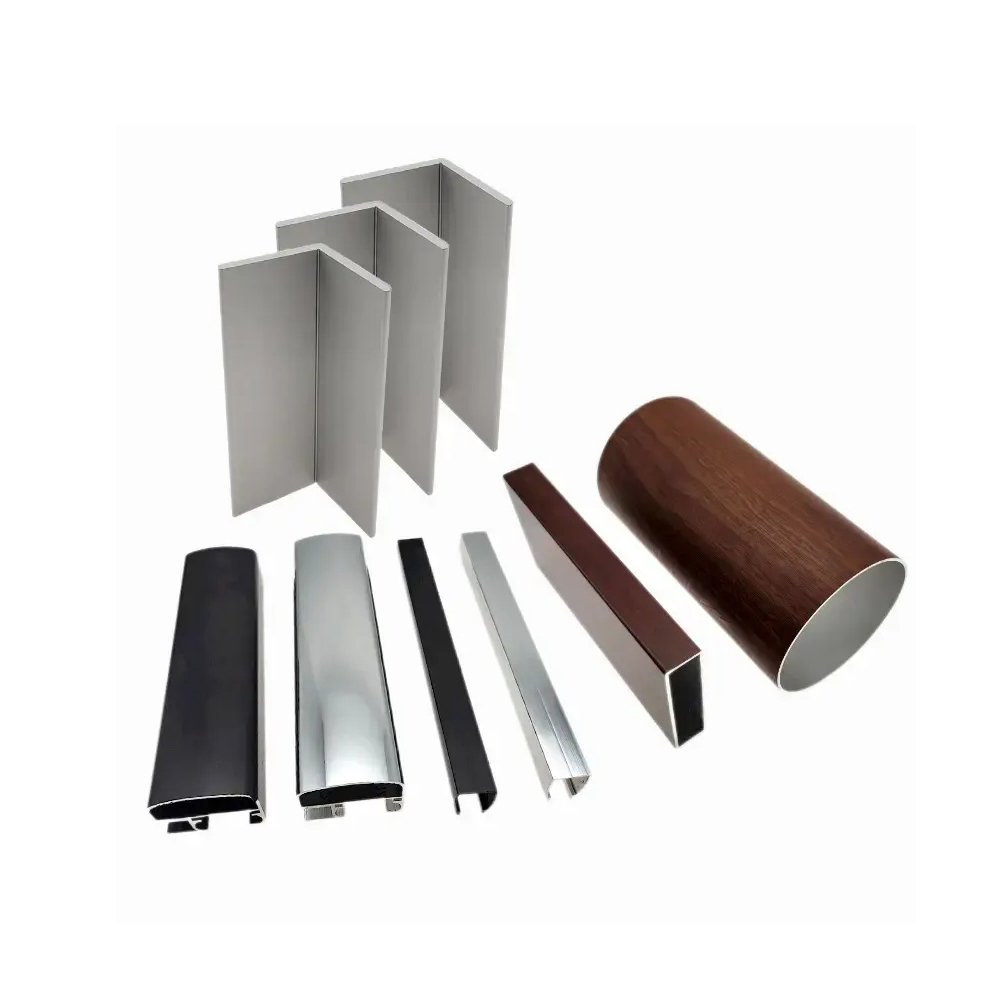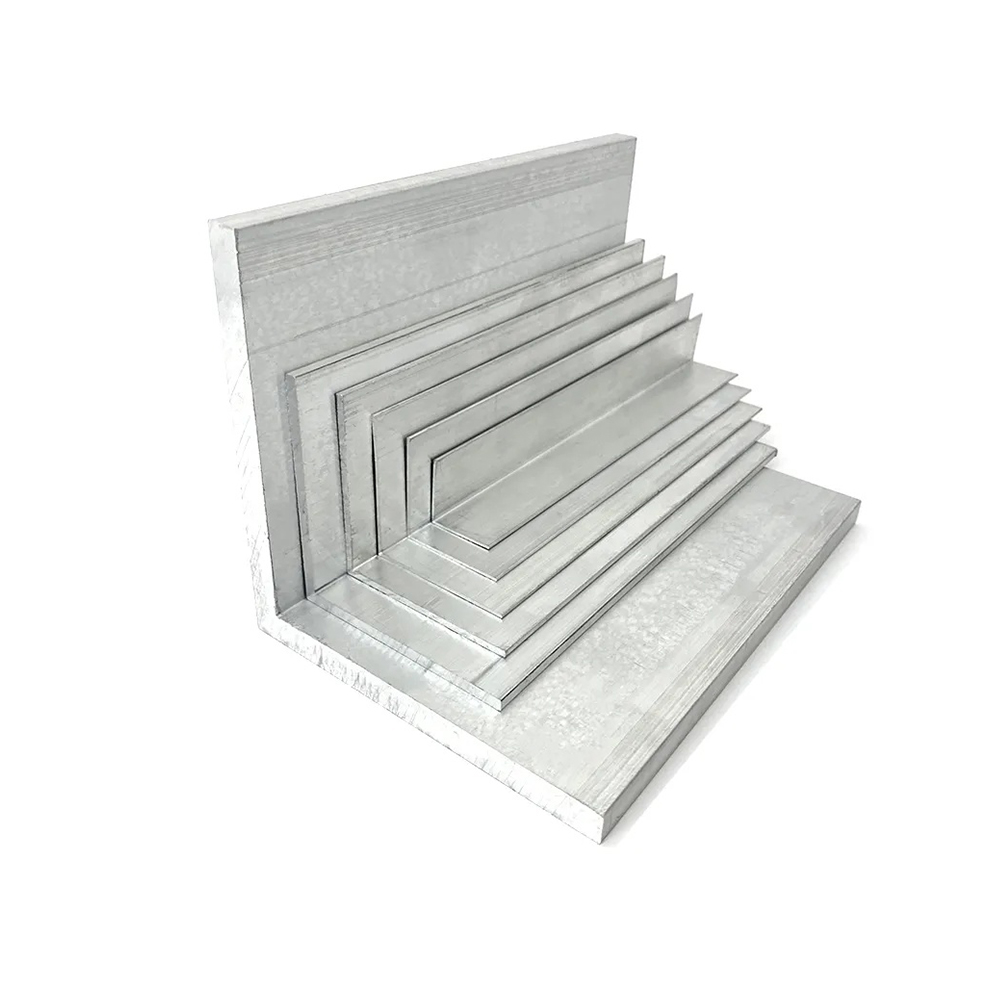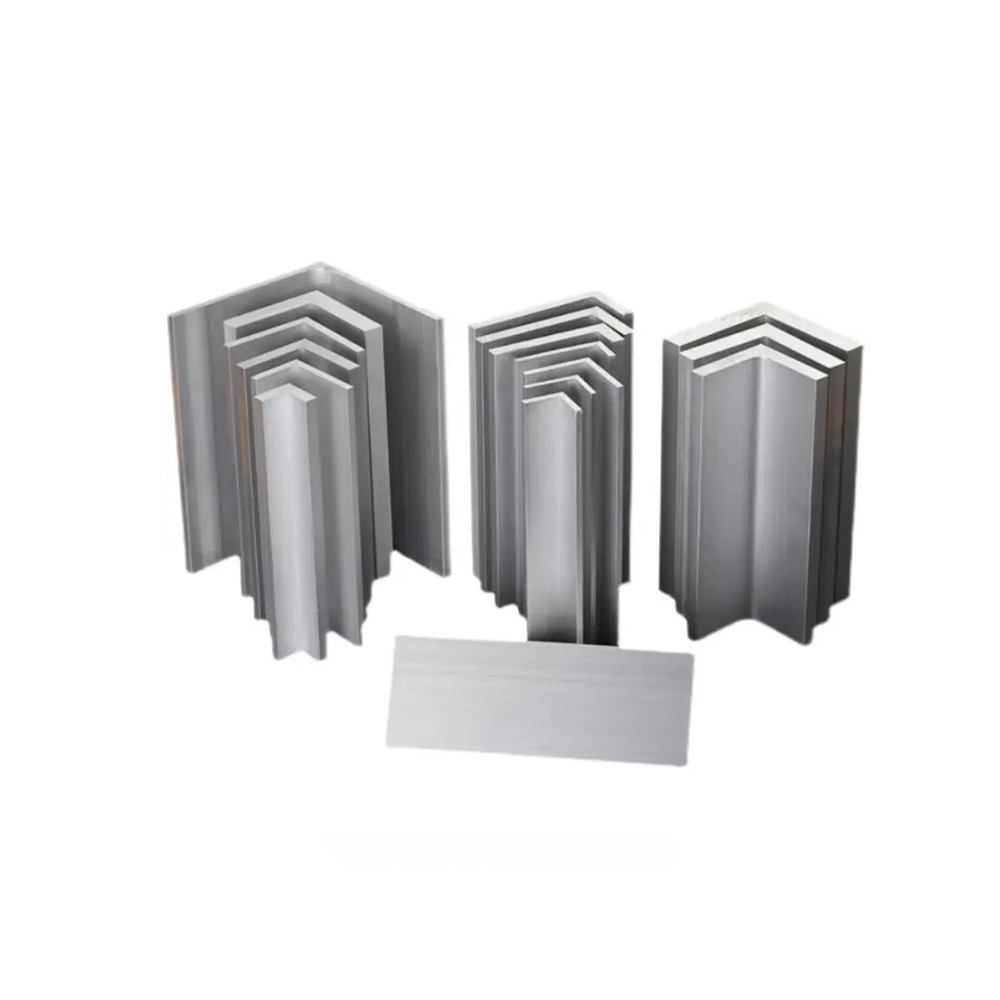Aluminum angles are L-shaped extrusions of aluminum, known for their strength, versatility, and lightweight nature. These profiles are formed by two perpendicular legs that meet at a right angle, creating a 90-degree angle. The unique geometry of the aluminum angle allows it to be used in a variety of applications, from structural framing to decorative details. As one of the most commonly used metal profiles in both commercial and industrial sectors, aluminum angles provide an essential building block for countless designs.
Choosing the right aluminum angle size is critical for the success of any project. Whether you're designing a structural frame, creating a support system, or adding an aesthetic touch, understanding the size specifications ensures that the aluminum angle meets the required strength, durability, and design criteria. The wrong size can lead to structural instability, inefficiencies, or higher costs. A comprehensive understanding of these specifications is, therefore, key to achieving optimal results.
1. Key Dimensions in Aluminum Angle Specifications
Leg Length
The leg length refers to the length of the two sides of the angle, which form the "L" shape. It is one of the most fundamental dimensions in aluminum angle specifications. Typically, leg lengths range from a few millimeters to several meters, depending on the needs of the application. For structural uses, leg length plays a significant role in load-bearing capacity. In general, the longer the leg length, the greater the strength and load capacity of the angle, but at the cost of added weight. Understanding this balance is essential when choosing the right size for specific requirements.
Thickness
The thickness of an aluminum angle is the measurement of the material’s thickness along its legs. This dimension directly impacts the strength and durability of the profile. Thicker aluminum angles can withstand higher loads and resist deformation more effectively. However, thicker profiles also weigh more and can be more difficult to work with. The ideal thickness depends on the nature of the application: heavy-duty structural applications require thicker angles, while lighter-duty uses may only require a modest thickness for sufficient performance.
Inside and Outside Corner Radii
The corner radii refer to the curved edges at the interior and exterior of the L-shaped angle. These radii are crucial in both aesthetic and functional terms. The inside corner radius is the rounded edge where the two legs of the angle meet, while the outside corner radius is the curvature on the opposite side. Smaller radii offer sharper angles, which may be desirable for certain aesthetic or structural requirements. Larger radii can increase strength by reducing stress concentrations at the corners, making the aluminum angle more resistant to cracking or bending. Understanding the appropriate corner radii for your project is vital for both design and strength considerations.
Aluminum angle profile Manufacturer
2. Standard and Custom Sizes
Common Standard Sizes
Aluminum angles are produced in a variety of standard sizes to meet general construction and industrial needs. Common sizes typically range in leg lengths from 1 inch to 6 inches, with thicknesses from 1/16 inch to 1/4 inch. These standard profiles are available in a wide array of alloys, each suited to different levels of strength and corrosion resistance. Standard sizes are ideal for projects with less specific requirements, allowing for quick procurement and installation. However, depending on the nature of the application, sometimes a custom profile may be necessary.
Custom Sizes: Tailored to Specific Applications
For more specialized projects, custom aluminum angles are often required. Custom sizes allow designers to tailor the dimensions of the angle precisely to their needs, such as adjusting leg lengths, thicknesses, or radii to achieve a specific aesthetic or performance requirement. Custom aluminum angles are particularly useful in applications where standard sizes don't meet particular load, space, or strength specifications. The process of obtaining custom aluminum angles typically involves working with a supplier to define exact measurements and, in some cases, selecting specific alloys for enhanced durability or performance.
Aluminum angle profile section
3. Aluminum Angle Material Grades and Alloys
Popular Alloys Used in Aluminum Angles
Aluminum alloys are commonly categorized by their chemical composition, and each alloy type brings unique properties to the table. The 6061 alloy is one of the most popular and versatile choices for aluminum angles. Known for its good corrosion resistance, weldability, and strength, 6061 is used in a wide range of applications. Another common alloy is 6063, which is often selected for its excellent finish quality and is widely used in architectural and decorative applications. For more heavy-duty applications, alloys such as 7075 offer high strength-to-weight ratios, but they may come at a higher cost. Understanding the specific alloy and its corresponding properties is crucial to ensuring the aluminum angle will perform optimally in a given application.
How Material Grade Affects Performance and Durability
The material grade of aluminum angles plays a direct role in the strength, flexibility, and overall durability of the profile. Higher-grade alloys, like 7075, provide superior strength and are ideal for applications that require a high degree of structural integrity, such as aerospace or military components. Meanwhile, alloys like 6061 offer a balance of strength and workability, making them a popular choice for a broad range of industrial and commercial uses. Selecting the right grade based on the demands of the project ensures that the aluminum angle will resist wear, corrosion, and deformation under typical operating conditions.
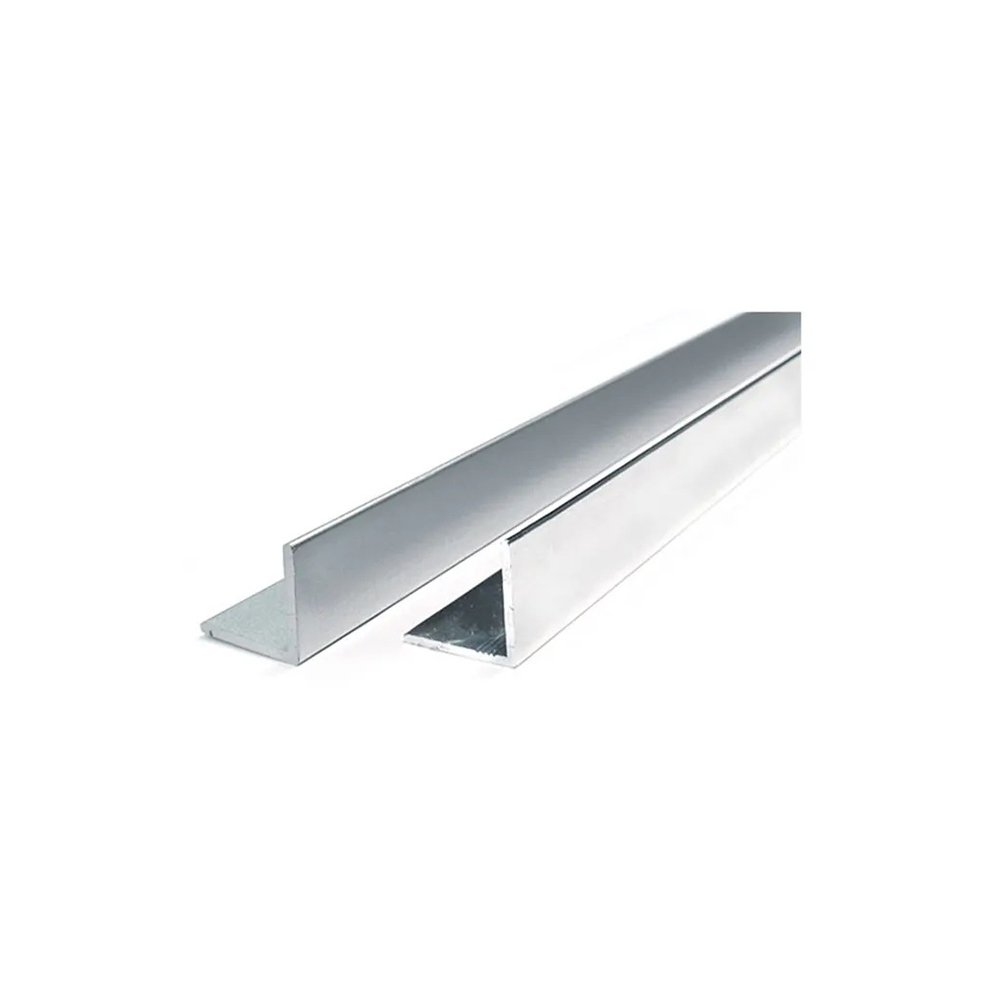
4. How to Select the Right Aluminum Angle for Your Project
Considering Load and Stress Requirements
When choosing the right aluminum angle, it’s crucial to consider the load and stress the material will need to withstand. For heavy-duty applications, such as in structural frameworks or industrial machinery, thicker angles with longer legs are often necessary. A larger cross-sectional area improves the load-bearing capacity. For lighter, non-structural applications, a smaller profile may be adequate, providing sufficient support without unnecessary weight. Calculating the required load tolerance and stress factors helps ensure the selected aluminum angle will perform effectively.
Environmental Factors: Corrosion Resistance and Weathering
Environmental conditions can significantly impact the performance of aluminum angles. In areas with high humidity, saltwater exposure, or extreme weather conditions, corrosion resistance becomes a critical factor in material selection. Alloys like 6061 and 5052 offer excellent resistance to corrosion, making them ideal for outdoor or marine applications. For projects exposed to harsh weather, selecting the right aluminum angle with proper surface treatment or coating can dramatically extend its lifespan and reduce maintenance costs.
Design Considerations: Aesthetic and Functional Needs
Aluminum angles are often chosen not only for their strength but also for their aesthetic and functional qualities. In architectural projects, the finish and appearance of the angle might play an important role. Angles with a smooth finish, such as anodized aluminum, are often used in visible applications. For functional designs, the specific dimensions of the aluminum angle, such as the leg length and thickness, must align with the needs of the structure or support system. By balancing both form and function, the right aluminum angle can elevate the design and performance of a project.
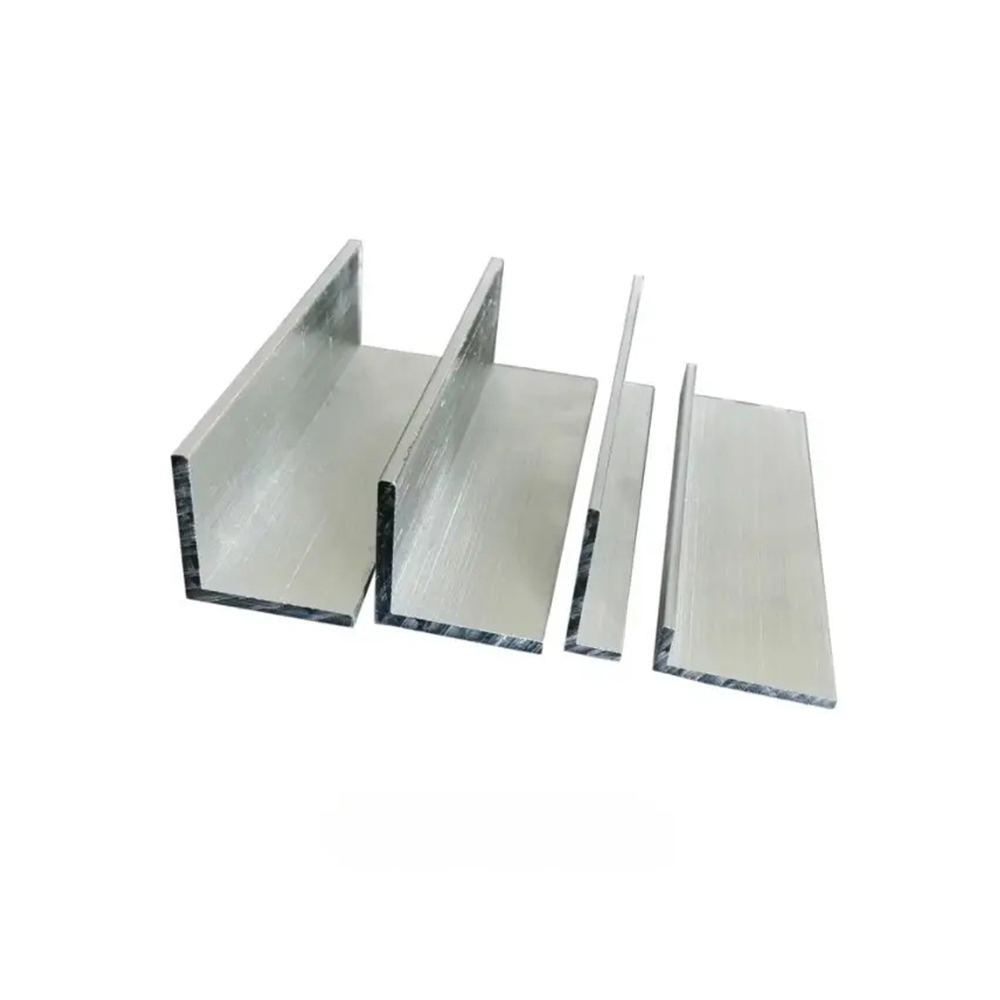
5. Applications of Aluminum Angles
Structural and Industrial Uses
Aluminum angles are often employed in the construction of frames, supports, and brackets in structural applications. The lightweight yet robust properties make them ideal for framing in buildings, machinery, and even automotive components. They are also used extensively in the creation of shelves, partitions, and even racks. The combination of strength and corrosion resistance is particularly valuable in industrial settings where structural integrity is paramount.
Decorative and Lightweight Applications
Beyond their structural applications, aluminum angles are also frequently used in more decorative or lightweight roles. In interior design, they can be used for trim, edging, or even furniture elements, providing a sleek and modern look. Additionally, due to their ease of customization, aluminum angles are often used in creative projects where unique shapes or sizes are required, such as in custom signage, displays, or lighting fixtures.
Conclusion
Understanding the size specifications and material properties of aluminum angles is essential for making informed decisions in construction and design projects. By considering factors such as leg length, thickness, material grade, and environmental conditions, one can select the optimal aluminum angle for any given application.
As technology and manufacturing techniques evolve, aluminum angle profiles are becoming increasingly versatile and customizable. New alloys and production methods continue to expand the range of possibilities, allowing for even more specialized uses across industries. Whether for structural integrity or aesthetic appeal, the future of aluminum angles promises a wider array of applications, making them an even more integral part of design and construction.

